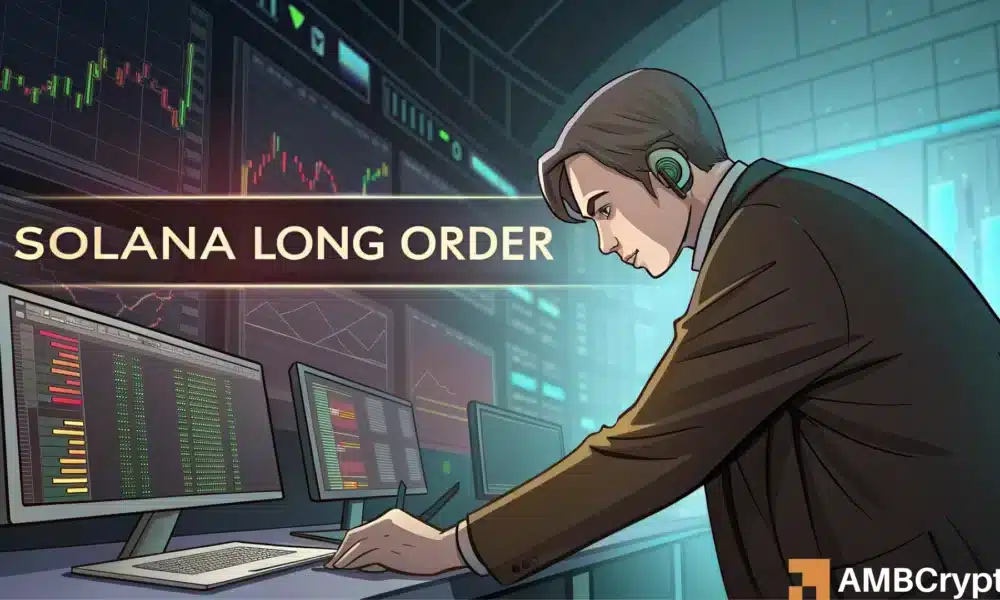Solana’s Remarkable Surge: An Overview of Current Trends and Future Prospects
Solana (SOL) has recently captured the spotlight with an impressive surge of nearly 20% in just a week, outpacing many of its rivals in the ever-competitive cryptocurrency market. The question on many traders’ and investors’ minds is whether the leveraged "long" positions can indicate a broader structural shift within the market. As Q2 commences, Solana’s performance signals bullish momentum, reclaiming vital supply zones established back in mid-March, providing both enthusiasts and analysts with hope for potential growth in this thriving ecosystem.
However, it is essential to note that the recent rally might not be entirely organic. Market derivatives metrics reveal a striking long-side imbalance, where over 70% of Binance’s Open Interest (OI) skews towards leveraged positions. Such a leverage-heavy structure can often spell trouble if not supported by consistent spot inflows and robust bid-side absorption. Without these crucial underpinnings, Solana risks facing a liquidation cascade in the event of a sharp downturn. This leads to a vital inquiry: Is SOL positioned for a classic liquidity sweep and mean reversion, or are the leveraged participants merely front-running an even larger market transformation?
Several strategic developments are shaping Solana’s bullish outlook this week and potentially setting the stage for substantial expansion in Q2. The launch of the world’s first spot Solana ETFs (Exchange-Traded Funds) on the Toronto Stock Exchange by Canada represents a significant leap toward institutional adoption—a factor that could substantially increase Solana’s market presence. Additionally, DefiDevCorp, a prominent player in the decentralized finance (DeFi) landscape, made headlines with a staggering acquisition of $10.5 million worth of SOL. Their acquisition has positioned the firm as "the MicroStrategy of Solana," with an impressive treasury of approximately $23 million in SOL recently bolstered further by Galaxy Digital’s stealthy moves, which withdrew an additional 150,221 SOL from Binance.
The confluence of these institutional investments has resulted in a notable 20% weekly surge in SOL’s price, contributing to Futures Open Interest peaking at $3.34 billion and recovering late-March resistance levels at $134. However, the cautionary tale of past events frames the outlook for Solana. In early January, during Solana’s previous rally that reached an all-time high (ATH) of $294, the OI climbed to an unprecedented peak of $6.8 billion. When risk-averse sentiment infiltrated the broader market, a dramatic deleveraging took place, leading to a sharp unwinding of OI down to $2 billion by the end of Q1.
To mitigate the risk of a similar scenario unfolding in the current market dynamics, the consistency of institutional inflows will play a critical role in bolstering Solana’s liquidity. If these trends continue, they could prevent another potential OI drawdown. As the technical outlook for SOL appears increasingly positive, a significant uptick in user adoption is evident. Following a dip below the $100 mark, Solana has gained over 200,000 new wallet addresses, reflecting robust interest in the platform. Combined with institutional accumulation and rising market optimism, conditions appear favorable for "dip-buying," enhancing the anticipations for a robust Q2 performance for Solana.
In conclusion, Solana’s significant recent gains underscore a pivotal moment in its growth narrative, wrapping the bullish momentum of its Q2 momentum with notable developments in institutional investments. However, traders and investors should be cognizant of inherent risks posed by leveraged positioning, culminating in the need for sustained market support to ensure long-term success. If current trends in liquidity and demand continue, Solana holds the promise of a thriving cryptocurrency poised for further advancements in the coming months. As the cryptocurrency landscape evolves, Solana stands ready to capitalize on new opportunities, potentially solidifying its place in the ever-expanding digital economy.


